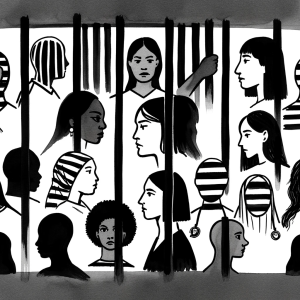
Unequal Lives, Equal Crime: The Surprising Reality of Homicide Rates Across America
Imagine growing up in a small town where opportunities are few and far between. The local economy is on a steady decline, jobs are scarce, and the future seems bleak. Yet, despite these challenges, there’s one area where your town matches—if not exceeds—its wealthier neighbors: the homicide rate. This surprising and somewhat counterintuitive reality is at the heart of recent research that reveals how violent crime, particularly homicides, is distributed across the United States.
This might sound like an unusual discovery, but it has profound implications for how we understand social inequality, crime, and the role of law enforcement in maintaining public safety. The findings challenge the assumption that increased economic disparity automatically leads to greater disparities in violent crime. Instead, this research suggests that even as the economic gap between rich and poor regions widens, the gap in violent crime rates—particularly homicides—has not followed the same pattern.
The Economic Landscape: A Growing Divide
Over the last several decades, the United States has witnessed a growing economic divide between different regions. Areas that once thrived on manufacturing have seen their economies gutted by global competition, particularly from countries like China. This economic shift has led to significant declines in personal income, increased unemployment, and, in many cases, a rise in substance abuse and other social issues.
Given these challenges, one might expect that regions hardest hit by economic decline would also experience a surge in violent crime. After all, when people struggle to find work and support their families, the temptation to turn to illegal activities—and the violence that often accompanies them—can be overwhelming.
However, the data tells a different story. While economic disparities have indeed grown, the inequality in homicide rates across different regions has not followed suit. In fact, the research indicates that the gap in homicide rates between the richest and poorest areas has actually decreased since the 1970s.
Policing, Incarceration, and Crime: A Complex Relationship
So, what explains this unexpected trend? To answer that question, it’s essential to look beyond simple economic factors and consider the broader social and institutional landscape. One key factor contributing to the leveling of homicide rates across regions is the changing nature of policing and incarceration in the United States.
In the past, poorer regions were often underserved by law enforcement, leading to higher crime rates. However, over the years, there has been a concerted effort to increase police presence and improve law enforcement practices in these areas. As a result, the disparity in policing between rich and poor regions has narrowed significantly, helping to curb the rise in violent crime.
At the same time, incarceration rates have also played a crucial role. The United States has one of the highest incarceration rates in the world, and this has had a profound impact on violent crime. While the effectiveness of mass incarceration as a crime prevention tool is hotly debated, the data suggests that it has contributed to a reduction in homicide rates in poorer regions.
However, it’s important to note that these trends don’t paint the full picture. While homicide rates have decreased, other forms of violent crime—such as assaults and robberies—may not have followed the same pattern. This raises important questions about the overall effectiveness of current law enforcement strategies and whether they are truly addressing the root causes of crime.
The Role of Social Institutions: A Shield Against Crime
Another critical factor to consider is the role of social institutions in mitigating the impact of economic decline on violent crime. In the United States, federal, state, and local governments play a crucial role in maintaining law and order, particularly in areas where local institutions may be weak or underfunded.
For example, when local police departments are overwhelmed or under-resourced, state police or federal agencies often step in to provide support. This multi-layered approach to law enforcement has helped ensure that violent crime is prosecuted and prevented even in economically depressed areas.
Furthermore, the presence of strong social institutions—such as schools, healthcare systems, and community organizations—can help to offset the negative effects of economic decline. These institutions provide essential services that support families and individuals, reducing the likelihood that they will turn to crime as a means of survival.
A Changing America: Implications for the Future
The findings from this research have significant implications for how we think about crime, inequality, and public policy in the United States. On the one hand, they suggest that efforts to improve policing and strengthen social institutions in poorer regions have been successful in reducing the gap in homicide rates. On the other hand, they also highlight the need for a more comprehensive approach to addressing the root causes of crime, particularly in areas that are struggling economically.
As the economic divide in America continues to grow, it will be increasingly important for policymakers to focus on strategies that address both the symptoms and the underlying causes of crime. This means not only improving law enforcement but also investing in education, healthcare, and other social services that can help to create a more just and equitable society.
Join the Conversation
What do you think are the most effective strategies for reducing crime in economically disadvantaged areas? How can we better address the root causes of crime while also improving public safety? Share your thoughts and ideas in the comments below!
Unlock Science Secrets:
Discover revolutionary research and innovative discoveries with ‘This Week in Science’! Designed for educators and science lovers, our free weekly newsletter offers insights that can transform your approach to science. Sign up now and deepen your understanding and passion for science. If you liked this blog, please share it! Your referrals help This Week in Science reach new readers.



